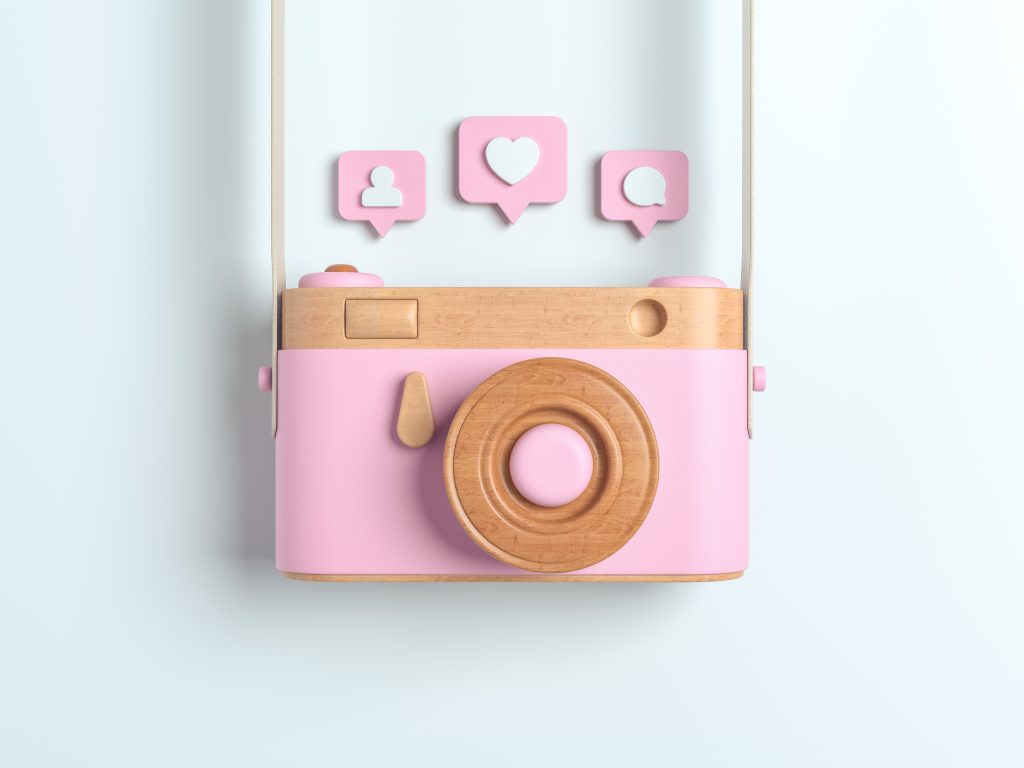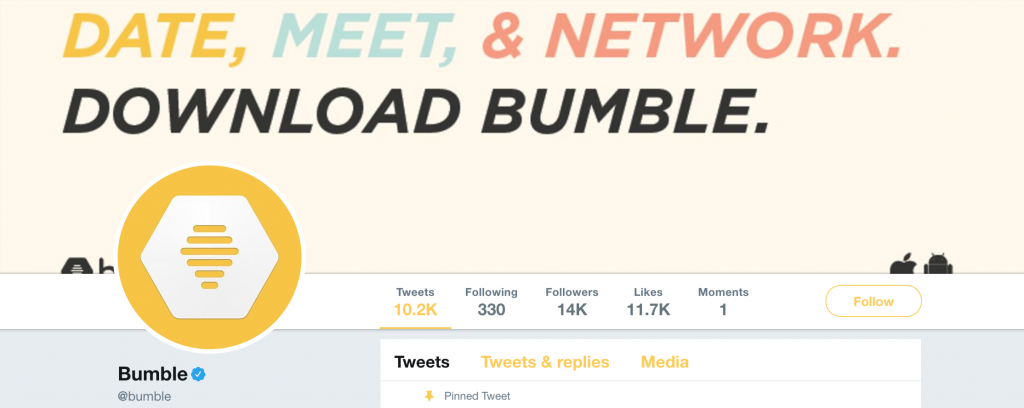How to Win at Social Media Branding

It often takes more than a smartly designed logo and a sleek website to fuel a brand’s success. The ability to build and raise your social media branding — and execute the same visual aesthetic across social channels — has become a major asset to a growing company.
Instagram, Facebook, Twitter, Snapchat, YouTube, and Pinterest are some of the social channels that can help you build your brand, connect with potential customers, and engage your community of followers. In other words, they’re the new sales pitches.
The thought of running accounts on multiple social media channels may be headache-inducing, especially if you’re a team of one.
But you can start making decisions today that will help you lock in on your brand’s online identity, and harness tools to set up and streamline your social accounts.
We want you to not only BE on social media but to understand how to polish your profiles to make a lasting impression. Whether your objective is to increase sales or build your company’s personality, here are some social media branding tips to help your business look its best.
Tip #1: Be consistent with your handle and profile picture
Use the same handle for all your social media channels. Why? It makes it easy for potential customers to find your page. Even if your handle is available on one channel but not on the others, go with something you can use across all accounts.
If your desired handle isn’t available, try adding a descriptor, location tag, or action to your name: official, HQ, store, app, Toronto, shop, ask, etc.
Even more important than your handle is your profile photo, something that can make your brand recognizable in a second. It’s not good enough to use the same logo across social pages — you need to optimize your logo for each profile.
Twitter and Instagram have round profile photos while Facebook favors a square image. You’ll have to consider both your logo’s size and placement within the profile picture. West Elm is a strong social media branding example:

Make sure to center your logo to make sure it doesn’t get cut off or obscured. Even established brands like Smitten Kitchen have made the mistake of not altering their logo to fit a social profile picture.

If your brand’s logo includes a symbol/monogram and a wordmark, consider dropping the wordmark in favor of the symbol when space is limited. Spotify chose this route for its profile pictures.


Thankfully, there are tools to help ensure your profile is the right size and fit for each page.
Sprout Social has an online image resizing tool called Landscape, where you can upload, crop, and resize an image for use on seven different social channels. Just pick what you need, and you’ll receive downloadable files.
Another option is to purchase Looka’s Social Media Kit after you design a logo: you get social media-optimized versions of your logo for Facebook, Twitter, LinkedIn, YouTube, Etsy, Instagram, and Pinterest. The kit also includes a favicon, a watermark, logo wallpaper, and more.
With the same handle and profile picture, your page will immediately look more polished!
Tip #2: Choose a color palette and fonts
We know consistency is key if you want your brand to be instantly identifiable, but that goes far beyond using your brand’s logo.
“Brands should be using a consistent color scheme across all social media channels to reach a point where people associate those colors with your brand without your logo even being present,” says Jake Messier, Chief Operating Officer of Mungo Creative Group.
That’s why sticking to consistent colors and fonts is another crucial element to build your brand’s online aesthetic. The colors in your logo are the anchor for your color palette. From there, choose complementary colors or shades you can use on your website and across your social channels.
Shopify uses the company’s glyph — a green and white shopping bag — as a profile photo against a dark navy background on all its social platforms.
But it often uses indigo as a secondary color on other pages, incorporating the color in headers, covers, and Instagram photos. The company’s signature sans-serif font is also constant in the visuals it shares.

Rules around logo usage, color palette, and fonts are the backbone of any company’s brand guidelines. Here’s a snapshot of what Shopify’s guidelines look like:

While it might be too much to tackle when you’re getting your brand off the ground, consider pulling together a few rules around how these elements should and shouldn’t be used.
(p.s. If you make a logo with Looka and purchase an Enterprise Package, we’ll automatically create brand guidelines for you and provide an easy-to-share link. You can also purchase them as an add-on to any logo package!)
Tip #3: Use your cover and header photos wisely
The cover and header photos are prime real estate on your Facebook and Twitter pages. These banner images are likely the first thing someone sees when landing on your page — think of them as your visual headline.
Firstly, you’ll want to make sure your cover and header photos are in the same color family as your logo; they should also coordinate with your profile photo.
To keep your social accounts fresh, try switching your cover or header photos every few months or seasonally. You can also take advantage of your cover photo to promote a hashtag, campaign, or initiative.
For International Women’s Day, Lululemon switched its photo to #Worth100, supporting the idea that every woman deserves to feel their 100% worth.

Fitbit kicked off 2018 with a new cover photo on Facebook and Twitter to support a new campaign called #MyReasonIs, pulling its brand colors into the mix.

When your cover photo isn’t cropped correctly, like Bumble’s in this example, you lose out on an opportunity to reinforce your brand and share key messages.

There’s no excuse for your cover or header photo to be sized improperly. While you might consider cropping cover photos yourself in applications like Photoshop, you can also take advantage of online tools to help you out.
Remember the Landscape tool we mentioned earlier? You can also use it for your header photo to crop and scale an image, so it’s ready for uploading. Sprout Social also offers an up-to-date content sizing cheat sheet for photo elements on each social channel.
Image design tools can also be used to create a one-of-a-kind banner.
Adobe Spark, Pagemodo or PicMonkey can help you pull together your logo, photos, graphics, and even text elements into a single image. PicMonkey also stocks over 1,000 overlay vector graphics that you can use as a backdrop against your brand’s name or logo for images of any size.
Sites like Unsplash and Pexels offer free stock photos that can be a starting point for a cover photo before putting your spin on the image.
Facebook also allows you to use a video as your cover photo, and more brands are taking notice. Wistia and Fitbit have both swapped out still images in favor of video to capture audience attention. The video autoplays when you hit the page, making it fit seamlessly into the feed!

Tip #4: Write a confident bio and stick to your voice
Write a bio you feel proud of — one that captures your brand in a few short sentences. You can tweak the length for each channel, but it should be concise and hit on three points: what is your company, what is your mission, and what makes you special. Your bio needs to tell your brand’s distinct story.
When it comes to the rest of the content you post, you may take on a particular style of writing — also called your brand voice — that reflects your brand’s personality. Are you serious or sarcastic? Witty or educational? Depending on what you say and how you say it, your brand could be perceived in a few different ways.
“Know your brand’s values and personality inside and out. Put some energy into crafting some creative verbal guidelines. And make sure every post, tweet, comment, gram, and snap feels like the real ‘you’ of your brand.”
– Mike Jones, Marketing Partner and Chief Brand Strategist at Resound
A good starting point is to think about the adjectives or even human characteristics you’d like people to associate with your brand and those you don’t.
In an interview with TechCrunch, Glossier founder and CEO Emily Weiss described the friendly and relatable approach her company embraced from the get-go and stands by to this day.
“We like to think that whenever we talk to [our customer] through captions on Instagram or through email or through copy on the site, that we’re writing text messages to a friend,” she said.

Tip #5: Visuals matter
By its nature, social media is highly visual. Sharing quality photos and videos is imperative if you want to capture and keep someone’s attention on your page.
“Visuals play an important part in building an effective brand on social media. Posts that include images receive much higher engagement rates than text-only posts.”
– Jake Messier, COO of Mungo Creative Group
Before you start sharing, think about how you might incorporate your logo. When you post a photo, what logo version are you going to stamp onto the image? How big do you want the logo to appear? Where should the logo be placed?
If you’re planning on sharing original photography, think about the look and feel of the images you share. Is your brand’s aesthetic bright and bold like Indigo? Or do you prefer clean and minimal like Mejuri?


Whether posting images of people, places, or things, filters can help your photos look cohesive, especially on Instagram. Sticking to one type of photo filter is a surefire way to make the photos on your page tell a more cohesive brand story.
Tip #6: Post content often
Maintaining a posting schedule is one way to stay on top of your social media accounts, and luckily there are many ways to get yourself organized.
You can make a DIY calendar in a spreadsheet to plan out what you’re going to post to what channel and when. But there are also plenty of scheduling platforms like Later, Buffer and Hootsuite, that can help you build out your campaigns, share content across multiple platforms, schedule content, shrink URLs, and even monitor engagement from one spot.
Whether it’s well-crafted tweet promoting a new product or a photo that reflects the lifestyle associated with your brand, sharing on social will keep your company top-of-mind for potential customers.
Mastering the art of social media branding
Social media is one of many digital touch points you can harness to grow your brand. However, don’t feel the pressure to be on all social sites. We’d suggest choosing the ones that make the most sense for you and building a strategy to ensure you’re consistent with your visual branding and posting schedule.
Being authentic, sharing meaningful content, and staying true to your brand’s voice and visuals on social media will help you build a community of customers who could become champions for your brand. Now that’s a win!
Want to learn more? Check out our guide to using social media for business.